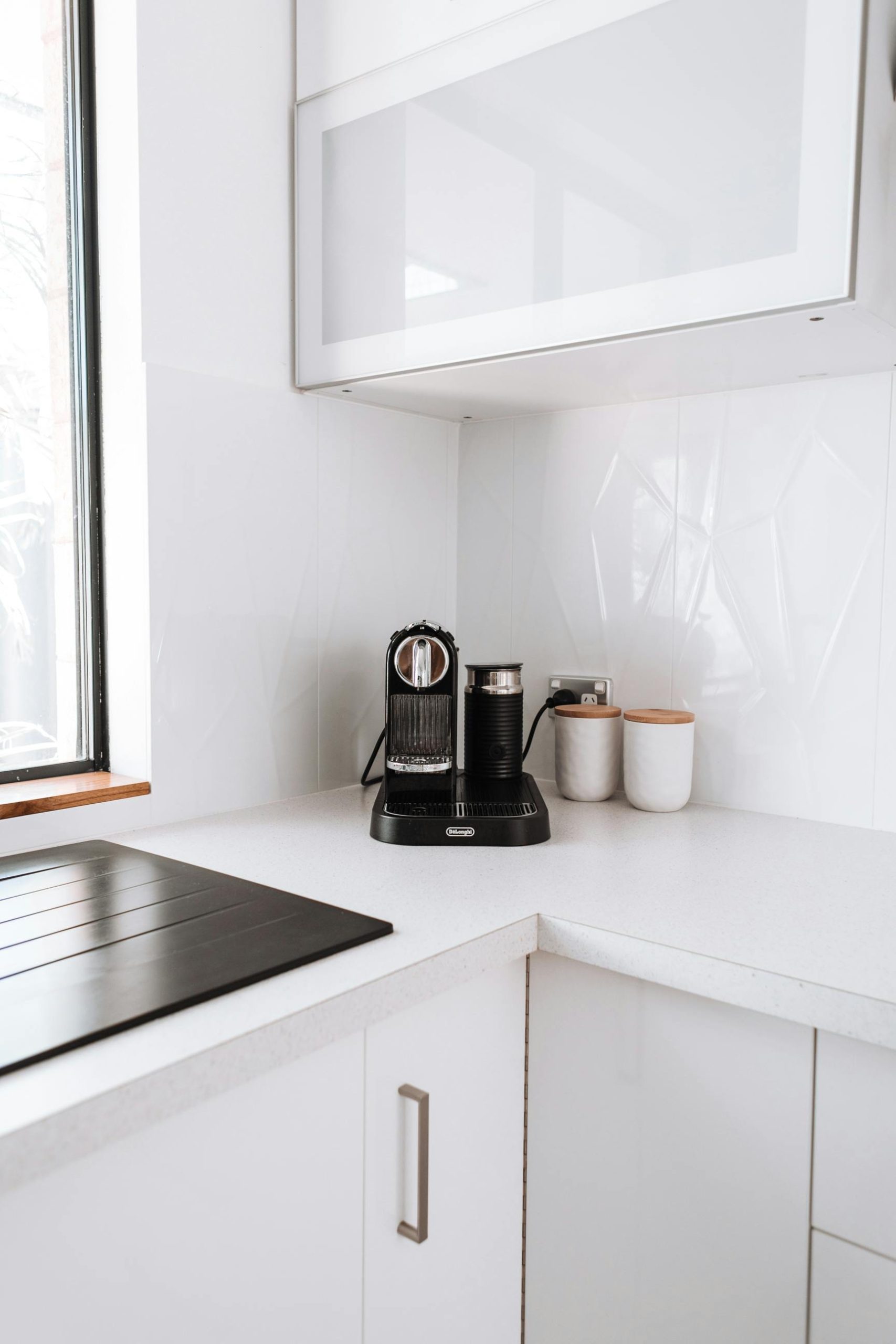Ad Blocker Detected
Our website is made possible by displaying online advertisements to our visitors. Please consider supporting us by disabling your ad blocker.
If you’re a frequent user of pressure cookers, you’re likely no stranger to the occasional hiccup or glitch that can occur during cooking. From steam leaks to overcooked meals, pressure cooker issues can be frustrating to deal with. But fear not! In this article, we’ll explore some of the most common problems that arise with pressure cookers and provide simple solutions to troubleshoot them. With our handy tips and tricks, you’ll be able to confidently tackle any pressure cooker problem that comes your way, ensuring that your cooking adventures are smooth and delicious.

Pressure cooker not reaching desired pressure
Check the sealing ring
If your pressure cooker is not reaching the desired pressure, the first thing you should check is the sealing ring. The sealing ring is responsible for creating a tight seal between the lid and the pot, allowing the pressure to build up inside. Over time, the sealing ring may become worn out or damaged, compromising its ability to create an airtight seal. Inspect the sealing ring for any cracks, tears, or deformities. If you notice any damage, it is important to replace the sealing ring with a new one specifically designed for your pressure cooker model.
Ensure the pressure release valve is closed
Another common reason why your pressure cooker may not be reaching the desired pressure is if the pressure release valve is not properly closed. The pressure release valve is responsible for releasing excess steam during the cooking process, but it needs to be closed in order for pressure to build up inside the pot. Double-check that the pressure release valve is completely closed before starting the cooking process.
Inspect the pressure indicator
The pressure indicator on your pressure cooker is a vital component that allows you to monitor the pressure level inside the pot. If the pressure indicator is not working properly, it may not accurately reflect the pressure inside the cooker. Make sure the pressure indicator is clean and free from any obstructions. If it still does not display the correct pressure, you may need to have the pressure indicator replaced or repaired by a professional.
Verify the pressure settings
Sometimes, the reason your pressure cooker is not reaching the desired pressure is simply because the pressure settings are not properly adjusted. Different recipes and types of food require different pressure levels. Check the pressure settings on your pressure cooker and make sure they are set to the appropriate level for your recipe. Refer to the recipe or the manufacturer’s instructions for the recommended pressure setting.
Check for blockages in the steam release vent
A blocked steam release vent can prevent your pressure cooker from reaching the desired pressure. The steam release vent allows excess steam to escape during the cooking process, and if it is clogged, the pressure inside the pot cannot build up properly. Inspect the steam release vent and remove any debris or blockages that may be obstructing the flow of steam. This simple step can often solve the issue of your pressure cooker not reaching the desired pressure.
Pressure cooker taking longer to cook food
Check the amount of liquid in the cooker
If your pressure cooker is taking longer than expected to cook food, one possible reason is that there is not enough liquid in the cooker. Pressure cooking relies on steam generation to cook the food quickly, and insufficient liquid can prevent the pressure cooker from building and maintaining the necessary pressure. Make sure you are adding the recommended amount of liquid as stated in your recipe or the manufacturer’s instructions.
Ensure the pressure cooker is correctly sealed
A poorly sealed pressure cooker can lead to longer cooking times. Even a small gap or misalignment between the lid and the pot can cause steam to escape, resulting in a loss of pressure. Before starting the cooking process, carefully position the lid on the pot, ensuring that it is aligned and seated properly. The sealing ring should also be in good condition and correctly positioned to create an airtight seal.
Verify the pressure cooking time
Different recipes and ingredients require different pressure cooking times. If your food is taking longer to cook, double-check that you are following the correct pressure cooking time indicated in your recipe or the manufacturer’s instructions. Undercooking or overcooking food can occur if the pressure cooking time is not accurate. Also, consider the size and thickness of the ingredients, as this can affect the overall cooking time.
Check for proper heat source
The heat source plays a crucial role in the pressure cooking process. If your pressure cooker is taking longer than usual to cook food, ensure that the heat source is set to the appropriate level. Electric pressure cookers usually have different heat settings, such as low, medium, and high. Gas stovetop pressure cookers may require adjusting the flame intensity. Make sure you are using the correct heat source and adjust it accordingly to ensure efficient cooking.
Inspect the pressure cooker’s gasket
The pressure cooker’s gasket, also known as the rubber seal, is essential for creating an airtight seal between the lid and the pot. Over time, the gasket may become worn out, torn, or misshapen, which can affect the cooking time. Inspect the gasket for any signs of damage and, if necessary, replace it with a new one designed specifically for your pressure cooker model.
Pressure cooker releasing excess steam
Check the position of the pressure release valve
If your pressure cooker is releasing excess steam, one possible reason is that the pressure release valve is not securely closed. The pressure release valve should be in the sealed position during the cooking process to retain the pressure inside the pot. Ensure that the pressure release valve is fully closed and not partially open, as this can result in excess steam escaping.
Inspect the sealing ring for damage
A damaged sealing ring can also contribute to the release of excess steam from the pressure cooker. Inspect the sealing ring for any cracks, tears, or deformities. Replace the sealing ring if you notice any damage, as it may compromise the airtight seal and cause steam leakage.
Verify that the pressure cooker is properly sealed
A poorly sealed pressure cooker can lead to the release of excess steam. Check that the lid is correctly positioned on the pot, with the sealing ring properly aligned and seated. Ensure that there are no gaps or misalignments between the lid and the pot, as this can result in steam escaping during the cooking process.
Check for blockages in the steam release vent
A clogged steam release vent can cause excess steam to be released from the pressure cooker. Inspect the steam release vent and remove any debris or blockages that may be obstructing the flow of steam. Clearing the vent can help prevent the pressure cooker from releasing excessive amounts of steam.
Adjust the heat source
The intensity of heat can affect the amount of steam released by the pressure cooker. If you find that your pressure cooker is releasing excess steam, consider adjusting the heat source. Lowering the heat slightly can help regulate the pressure and prevent excessive steam release. Experiment with different heat settings until you find the ideal balance for your cooking needs.
Pressure cooker lid not sealing properly
Inspect the sealing ring for damage
A damaged sealing ring can prevent the pressure cooker lid from sealing properly. Carefully examine the sealing ring for any cracks, tears, or deformities. If you notice any damage, replace the sealing ring with a new one that is compatible with your pressure cooker model. A damaged sealing ring can compromise the airtight seal and cause steam leakage.
Ensure the sealing ring is correctly positioned
Proper positioning of the sealing ring is crucial for a tight seal between the lid and the pot. Remove the sealing ring and ensure it is clean and free from debris. After cleaning, carefully position the sealing ring back into its designated groove, ensuring that it is seated securely and evenly.
Clean the sealing ring and lid properly
Food debris or residue can accumulate on the sealing ring and lid, compromising the seal. Regularly clean the sealing ring and lid with warm, soapy water to remove any residue. Pay attention to any crevices or hard-to-reach areas where food particles may have lodged. Thorough cleaning can help maintain a proper seal.
Check for any food debris interfering with the seal
Sometimes, food debris or particles can get stuck between the lid and the pot, preventing a proper seal. Before placing the lid on the pressure cooker, inspect the rim and remove any food debris that may be interfering with the seal. A clean and clear rim will ensure a tight seal for efficient pressure cooking.
Replace the sealing ring if necessary
If you have checked and cleaned the sealing ring, but the lid still does not seal properly, it may be time to replace the sealing ring. Sealing rings can wear out over time, losing their elasticity and ability to create an airtight seal. Refer to the manufacturer’s instructions for the correct replacement sealing ring for your pressure cooker model.

Pressure cooker not venting steam
Check the pressure release valve for blockages
If your pressure cooker is not venting steam, the pressure release valve may be clogged or blocked. Inspect the valve and remove any debris or residue that might be obstructing it. Clearing any blockages can help the pressure cooker vent steam properly during the cooking process.
Verify that the pressure cooker is correctly sealed
A poorly sealed pressure cooker can affect the venting of steam. Make sure that the lid is properly aligned and seated on the pot, with the sealing ring correctly positioned in its groove. Ensure that there are no gaps or misalignments that may interfere with the proper venting of steam.
Inspect the sealing ring for damage
A damaged sealing ring can prevent the pressure cooker from venting steam effectively. Examine the sealing ring for any signs of damage, such as cracks, tears, or deformities. Replace the sealing ring if necessary to ensure proper venting and prevent steam leakage.
Clean the pressure release valve
Over time, the pressure release valve can become dirty or clogged with residue, hindering its ability to vent steam. Remove the pressure release valve and clean it thoroughly with warm, soapy water. Use a brush or cloth to remove any stubborn residue. Once cleaned, reassemble the pressure release valve and ensure it operates smoothly.
Adjust the heat source
The heat intensity can affect the venting of steam. If your pressure cooker is not venting steam properly, try adjusting the heat source. Lowering the heat slightly can help regulate the steam pressure and ensure proper venting. Experiment with different heat settings until you find the optimal balance for efficient steam venting.
Food sticking to the bottom of the pressure cooker
Ensure sufficient liquid is added for pressure cooking
Insufficient liquid in the pressure cooker can cause food to stick to the bottom. As a general rule, always add enough liquid as specified in your recipe or the manufacturer’s instructions. The liquid is necessary to generate steam and create the pressure needed for efficient and non-stick cooking.
Avoid overfilling the pressure cooker
Overfilling the pressure cooker can lead to food sticking to the bottom. The pressure cooker should only be filled up to the recommended maximum fill line indicated in your pressure cooker’s manual. Overfilling can cause food to come into direct contact with the bottom of the pot, increasing the likelihood of sticking.
Stir the food occasionally during cooking
To prevent food from sticking to the bottom of the pressure cooker, it is recommended to stir the food occasionally during the cooking process. Stirring helps distribute the heat evenly and prevents food from settling and sticking to the bottom. Use a heat-resistant utensil and gently stir the ingredients to avoid disrupting the pressure inside the cooker.
Reduce the heat if necessary
Cooking at excessively high heat can cause food to stick to the bottom of the pressure cooker. If you notice that the food is sticking, try reducing the heat slightly. Lowering the heat can help prevent the food from burning or sticking to the bottom while still maintaining the necessary pressure for cooking.
Use a heat diffuser or trivet for delicate dishes
Certain delicate dishes, such as custards or desserts, are more prone to sticking in a pressure cooker. To prevent this, consider using a heat diffuser or trivet. A heat diffuser helps distribute the heat evenly, while a trivet elevates the dish, preventing direct contact with the bottom of the pot. These accessories can help protect delicate dishes from sticking.

Pressure cooker producing a burning smell
Check for any food debris stuck to the bottom
A burning smell from your pressure cooker may indicate that there is food debris stuck to the bottom of the pot. Carefully inspect the bottom of the cooker and remove any remnants of burnt food. Clean the pot thoroughly to eliminate any lingering odors and prevent them from transferring to future dishes.
Ensure proper amount of liquid is used
Insufficient liquid in the pressure cooker can lead to food burning and producing a burning smell. It is essential to add enough liquid as specified in your recipe or the manufacturer’s instructions. The liquid helps create the necessary steam and maintain a safe cooking environment. Always ensure there is an adequate amount of liquid to prevent burning and scorching.
Adjust the heat source
If your pressure cooker is producing a burning smell, the heat source may be too high. Reduce the heat slightly to prevent the food from burning. Lowering the heat can help create a gentler cooking environment while still maintaining the necessary pressure. Monitor the cooking process closely to avoid any further burning.
Inspect the pressure cooker’s gasket
A worn-out or damaged gasket can cause the pressure cooker to produce a burning smell. Inspect the gasket for any signs of wear, tears, or deformities. If you notice any damage, replace the gasket with a new one specifically designed for your pressure cooker model. A properly functioning gasket ensures an airtight seal, reducing the likelihood of burning smells.
Clean the pressure cooker and lid thoroughly
Residual food particles or grease on the pressure cooker and lid can contribute to a burning smell. Regularly clean the pressure cooker and lid with warm, soapy water to remove any buildup. Pay attention to any hard-to-reach areas where food debris may be hiding. Thorough cleaning helps eliminate any lingering smells and ensures optimal cooking performance.
Pressure cooker not starting the cooking process
Verify that the pressure cooker is properly plugged in
Before troubleshooting any issues with your pressure cooker, ensure that it is securely plugged into a functioning power outlet. Check the power cord for any damage or loose connections. Sometimes, a loose or faulty electrical connection can prevent the pressure cooker from starting. Confirm that the pressure cooker is receiving power before proceeding with further troubleshooting steps.
Check the power source and outlet
If the pressure cooker is securely plugged in but still not starting, inspect the power source and outlet. Test the outlet with another device to confirm that it is providing power. If necessary, try plugging the pressure cooker into a different outlet to rule out any issues with the original power source. Faulty outlets or power sources can prevent the pressure cooker from starting.
Ensure the control panel is functioning correctly
If your pressure cooker has a control panel, check to see if it is displaying any error messages or if any buttons are unresponsive. An unresponsive control panel or error messages can indicate an issue with the internal electronics. Try turning the pressure cooker off and then on again to reset the control panel. If the issue persists, consult the manufacturer’s instructions or contact customer support for further assistance.
Inspect the timer and settings
The timer and settings on your pressure cooker play a crucial role in starting the cooking process. Double-check that you have properly set the desired cooking time and other relevant settings. Make sure the timer is not accidentally set to zero or if any other settings need adjustment. Incorrectly set timers or settings can prevent the pressure cooker from starting the cooking process.
Contact the manufacturer for assistance
If you have followed all the troubleshooting steps and your pressure cooker still does not start, it may be necessary to contact the manufacturer for further assistance. Consult the manufacturer’s instructions for the appropriate contact information. Their customer support team should be able to provide guidance and help resolve any issues with your pressure cooker.
Pressure cooker displaying error codes
Refer to the pressure cooker’s user manual for error code explanation
When faced with error codes on your pressure cooker’s display, the first step is to consult the user manual. The manual should provide an explanation of each error code and possible causes. Understanding the specific error code can help you troubleshoot the issue more effectively.
Check if the error code indicates a specific issue
Error codes often indicate specific issues or malfunctions within the pressure cooker. Some common error codes include issues with the pressure sensor, temperature sensor, or heating element. Once you have identified the error code, refer to the user manual to determine the corresponding issue. Identifying the specific problem can guide you in finding a solution.
Perform suggested troubleshooting steps
The user manual for your pressure cooker typically provides recommended troubleshooting steps for each error code. Follow the suggested steps carefully and in the specified order. These steps often include resetting the pressure cooker, checking connections, or adjusting settings. Performing the suggested troubleshooting steps can help resolve the error code and get your pressure cooker back to normal operation.
Contact customer support or the manufacturer for further assistance
If you have followed the recommended troubleshooting steps for the error code, but the issue persists, it is advisable to contact either the pressure cooker’s customer support or the manufacturer directly. They will have more in-depth knowledge about the specific error and might be able to provide further assistance or arrange for repairs or replacements if necessary.
Consider resetting the pressure cooker if applicable
Some pressure cookers have a reset feature that can help resolve certain error codes. Check if your pressure cooker has a reset button or a specific reset procedure outlined in the user manual. Performing a reset can often clear temporary issues and restore the normal functioning of the pressure cooker.
Pressure cooker lid getting stuck
Check for any food debris interfering with the lid seal
If your pressure cooker lid is getting stuck, the first thing to check is whether any food debris is interfering with the seal. Carefully inspect the rim of the pressure cooker pot and the corresponding section of the lid for any residue or food particles. Clean the rim and the lid thoroughly to ensure a smooth and unobstructed seal.
Ensure the sealing ring is clean and properly positioned
A dirty or mispositioned sealing ring can cause the pressure cooker lid to get stuck. Remove the sealing ring and clean it with warm, soapy water, making sure to remove any residue or debris. After cleaning, ensure that the sealing ring is correctly positioned in its designated groove, enabling a proper seal between the lid and the pot.
Avoid excessive pressure buildup
Excessive pressure buildup can cause the lid to become difficult to open or even get stuck. To prevent this, always ensure that you are using the correct pressure setting as specified in your recipe or the user manual. Overfilling the pressure cooker can also lead to excessive pressure buildup, so be sure to follow the recommended maximum fill line.
Inspect the pressure cooker’s gasket for damage
The gasket, or rubber seal, plays a crucial role in creating a tight seal between the lid and the pot. If the gasket is worn out or damaged, it may cause the lid to get stuck. Inspect the gasket for any signs of wear, tears, or deformities. If you notice any damage, replace the gasket with a new one specifically designed for your pressure cooker model.
Apply a small amount of cooking oil to the lid rim
If you are still experiencing issues with a stuck lid, applying a small amount of cooking oil to the rim of the lid can help alleviate the problem. Use a paper towel or cloth to apply a thin layer of cooking oil to the rim, ensuring an even distribution. This can reduce friction and make it easier to open and close the lid.
In conclusion, troubleshooting common pressure cooker issues involves checking and inspecting various components such as the sealing ring, pressure release valve, pressure indicator, pressure settings, steam release vent, amount of liquid, heat source, gasket, and control panel. Cleaning, replacing damaged parts, adjusting settings, and contacting customer support when necessary are some of the solutions to these issues. By properly addressing these troubleshooting steps, you can enjoy efficient and problem-free cooking with your pressure cooker.

